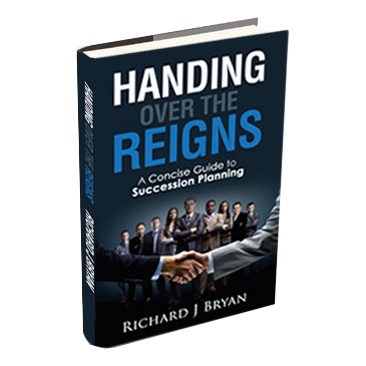As a succession planning speaker and business turnaround speaker, I’ve often said that the people who fail to attend my keynote presentations in the first category, far in advance of any leadership transitions, are destined to end up in the second. And this comment isn’t rooted in arrogance—rather, it comes directly from my own hard-knocks schooling on both matters.
Had my family’s business been a bit more proactive about looking ahead to the next generation, I likely would not have found myself leading a failing company OR shepherding that company through a difficult (but ultimately successful) turnaround. It’s both of these experiences that led me to share my experience on the succession planning speaker and business turnaround speaker circuits. Here are four reasons to plan WAY ahead.
1. Transition
In my family business, our handover (with me as the successor, following my father) took about four years. And the business did survive this plan—but only just. If I had to do it over again, I’d want a buffer of at least a decade in place, if not a solid 15 years.
Why? Regardless of my business degree and management experience, I lacked the hands-on skills required to run such a large organization. Yes, the process was rushed by my father’s sudden retirement due to a serious illness. But the reality is that we simply didn’t start planning soon enough. When I took the reins at just 28 years old, I lacked the credibility to earn respect from our employees, our bank and our manufacturing partners.
We also made a mistake that I see SO often on the succession planning speaker circuit: we made plans to fill essential C-suite roles, but didn’t think the transition through at ALL levels. Understanding where your company wants to go—and how it wants to grow—over the next 10–20 years will be key to understanding how to fill entry-level and mid-level roles as well.
2. Education
One advantage of planning for succession in a family business is that you have control over your successor’s education and career path. When you start the process with 10–15 years of buffer, you’ll have time to influence not only the educational choices your family member makes at university, but also the experience they gain in the formative years of their career.
Depending upon the nature of your business, you may want your successor to have hands-on experience in the particular workings of your industry, rather than a background in business, finance and leadership only. Even though our succession was compressed, I was still able to work for different dealer groups across the U.S. My experience with these high-performing American companies taught me what success looked like throughout the industry; when I eventually joined the family business, I understood how our own operations would have to adapt in order for the company to survive in this competitive landscape.
In addition, many of the people I’ve met on the succession planning speaker circuit tell me that hands-on experience in a variety of roles critical to your business can help to garner respect from all levels of employees within the enterprise, creating a “in-the-trenches” camaraderie that can help to support good morale. And of course, it gives your budding leader a different—and infinitely more practical—perspective on the business.
3. Indoctrination
So, your successor has a respectable university pedigree and a wealth of experience in the industry. But do they understand why you started the business in the first place, why you continue to pour your energy into it every day—and what you expect it to look like in 20 years? As a succession planning speaker, I often tell my clients that THIS is the most important part of the complex process of passing the torch.
An extended hand-over process gives the incumbent CEO ample opportunity to share his or her values, ethos and purpose with the successor. Every family business, like every family, is unique; the rising leader will need time to fully understand and embrace the company’s mission and vision. After all, it will fall to them to make this vision a reality one day.
4. Separation
Finally, an overlooked benefit of planning far in advance is that it allows more time for the outgoing CEO to plan for the future. This removes one of the biggest stumbling blocks to succession: a leader who does not want to retire because he or she cannot see themselves doing anything other than run the business.
My own father fell into this category. After 44 years, running the family business had become his entire life. He had few outside interests; though he had traveled all over the world, most of his trips were factory visits or sales incentives taken with other dealers and manufacturers. I believe this was the reason he found it necessary to come back to work after a life-threatening illness and operation; in his mind, there was simply no alternative.
And he’s not alone; most business owners don’t want to think about letting go of everything they’ve built. By padding your succession planning process with a decade or more, you’ll give this kind of leader time to diversify, so to speak—to seek new interests outside of the business.
To learn about the important of advance planning and the value of a contingency plan, sign up for our mailing list—we’ll deliver it right to your inbox.


